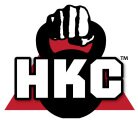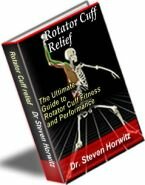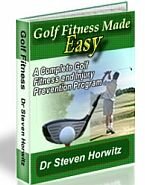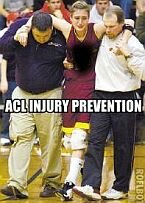Golfer's Elbow
 GOLF FITNESS MADE EASY A Complete Guide To Golf Fitness and Injury Prevention |
 ROTATOR CUFF RELIEF: The Ultimate Guide to Rotator Cuff Fitness and Injury Prevention |
The game of golf does not produce the number of serious injuries which are common in more vigorous sporting activities. However, golf injuries do warrant attention, especially considering that about 20 million American golf at least twice per year. As was discussed in the last article, it is quite common for recreational golfers to complain of lower back pain after the season's first round. Second only to lower back pain are elbow injuries. This condition plagues not only golfers, but tennis players, bowlers, mechanics or anyone who uses frequent rotary movements of the forearm. It is caused by excessive strain on the muscles of the forearm which run from the wrist to the elbow. These muscles produce forward and backward movement at the wrist.
There are two types of elbow problems which are termed medial and lateral epicondylitis. Lateral epicondylitis or tennis elbow is also the most common elbow problem in golfers. It occurs in the outside arm, ie. on the left elbow of a right-handed golfer. The motion of the left arm is similar to a tennis backhand stroke. It is most prevalent in novice players. This movement stresses the muscles that straighten or extend the wrist and fingers. They attach on the outer side of the elbow and are called your wrist extensors. Pain usually begins at the outer bony prominence at the elbow (lateral epicondyle) and can spread all the way down the forearm.
Forehand tennis elbow or golfer's elbow is common in professional players. It occurs on the inside arm, ie. on the right elbow of a right-handed golfer. This movement strains the muscles that bend the wrist foreword (flexion) and allow you to make a fist. These muscles attach at the bony prominence on the inside of the elbow (medial epicondyle) and are called your wrist flexors. Pain begins in this area and may spread down the forearm.
Golfers who grip the club too tightly or who smash the ball are most likely to suffer this injury. Overuse is also a major cause of epicondylitis. Considering that serious players hit about 500 shots per day and you can see why this injury is so common. The force of hitting the ball travels from the club to the forearm and ends up at the elbow tendon. Over time this causes a small rip or tear in the muscle/tendon. If this tear is allowed to recur every few days it becomes inflamed and proper healing is interrupted. This continued use propagates the tear and symptoms worsen. Small areas of scar tissue develop called trigger points. Even every day activities like opening a car door or lifting that morning cup of coffee interrupt normal healing. Also remember, the older you are, the slower the healing process. This means that more rest and rehabilitation is needed.
The first part of treatment is proper evaluation of the injury. Initially you must rest and relieve the inflammation. Always ice the area immediately after you feel pain and stop playing! Too many people continue to play only to pay the next day.
Adhesions form in the muscles around the elbow. This scar tissue must be broken up to allow the tissue to heal properly. Two techniques that break up these adhesions in the muscles are called Active Release Techniques® and Graston Technique.
Ultrasound, a deep heat, allows blood to flow to the injured area to get rid of the scar tissue and supply nutrients for healing. Chiropractic adjustments to the neck, shoulder, elbow and hand are usually needed to restore proper joint motion. A proper strength and stretching program is essential to restoring the area. This includes wrist curls (pulling a weight palm up), wrist extensions (extending the wrist from a palm down position), pronation and supination (turning the wrist from palm up to palm down) and stretching of the wrist flexors and extensors.
| The Ultimate Nutritional Lie Detector Test LEARN MORE  |
Kettlebell Rehab

Click Here
To See How Kettlebells will transform your body!
Vortex Rehab

Click Here
To See How This
Revolutionary Machine
Can Help You!
Partner / Support

Loans up to 3 months - fast cash advances for up to 90 days and up to $5,000!


















